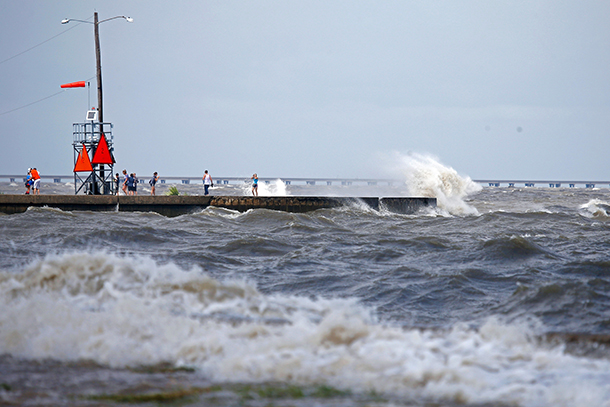Peacock, Brody outline Texas’ hazard vulnerability in Eagle

Sam Brody

Walter Peacock
Due to the destruction of natural resources and poor community planning efforts, Texas remains extraordinarily vulnerable to hurricane damage, said two Texas A&M urban planning professors in an Aug. 28 Bryan-College Station Eagle [report] (http://www.theeagle.com/article/20120828/BC0101/120829606/1003/BC01) as Hurricane Isaac barreled through the Gulf of Mexico.
Although Texas was spared Isaac’s wrath, building in areas inappropriate for development continues to increase the state’s vulnerability, said Walter Gillis Peacock, director of the [Hazard Reduction and Recovery Center] (http://hrrc.arch.tamu.edu/) .
The state, he said, has developed proper building codes but added that there are no “teeth” to them.
“There is a disconnect between the state and local level, and very limited, to no regulations at the county level,” said Peacock. “In Texas, we believe in land-use rights above all else.”
Sam Brody, director of the [Institute for Sustainable Coastal Communities] (http://one.arch.tamu.edu/news/2012/8/13/brody-new-institute/) , which combines resources of Texas A&M’s College of Architecture and Texas A&M University at Galveston, said that flooding remains a major concern in the state.
“Texas is one of the most flood-ravaged places in the country. From 1960-2008, we recorded about 8,000 casualties from flooding, which is 2.5 times the next state on the list,” said Brody, who also heads the [Center for Texas Beaches and Shores] (http://www.tamug.edu/CTBS/) . “Houston has had the largest number of flood fatalities in the United States for the last 50 years and one of the highest per-capita property damage from floods in the U.S.”
Previous post
Tags
- building a better texas
- hazard reduction & recovery
- hrrc gallery
- land development
- landscape architecture & urban planning
- laup gallery
- planning
- research
- sustainability
Related Posts

Study eyes how lower Lake Conroe levels impact economy

HRRC examining implementation of local hazard plans

Texas A&M hazard team's 'scorecard' adopted by Norfolk

Museum showcases HRRC-developed housing program

A&M researchers collaborate in U.S. resilience center
Follow Us
Facebook Twitter Vimeo Youtube Flickr RSS
Recent Posts

Planning prof heads study of disaster housing aid

A message from the dean

Former student remembered as expert planner

Leading educator named new head of Architecture Dept.





_thumbnail_small.png)
